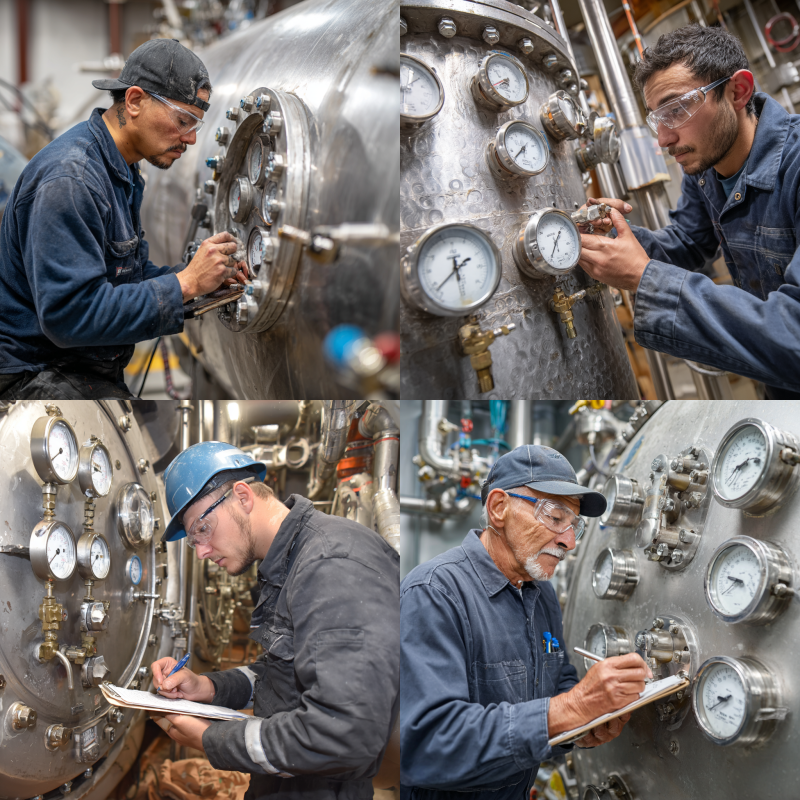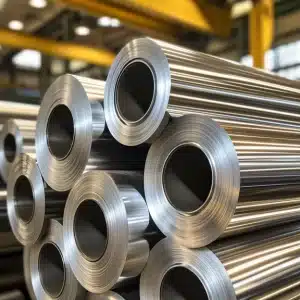
How to Maintain a Pressure Vessel: Avoid Costly Mistakes
Practical Tips on How to Maintain a Pressure Vessel Safely and Efficiently
In many industries from defense to oil and gas, pressure vessels store gases or liquids at elevated pressures, making them vital for daily operations. Yet recent OSHA inspections show that cracked or damaged vessels can lead to serious leakage, fire, or even explosions [1]. If you’re searching for a pressure vessel manufacturer in the USA, you already appreciate the importance of solid engineering. But knowing how to maintain a pressure vessel is equally critical to avoid costly shutdowns and ensure everyone’s safety. The good news is, these steps are simpler than you might think.
Proper maintenance helps you stay code-compliant, extend vessel lifespan, and minimize downtime. Below, you’ll find clear tips on picking materials, setting an inspection schedule, and mitigating risks so your pressure vessel can run smoothly for years.
How to maintain a pressure vessel
When you think of “how to maintain a pressure vessel,” you might picture elaborate procedures and big budgets. In truth, regular checkups and sensible upkeep will prevent most failures. According to OSHA, many accidents arise simply because small cracks or corrosion are overlooked. You can address this by following recognized standards, such as the ASME code, and by planning inspections that spot trouble early.
Maintenance typically involves these core tasks:
- Scheduling routine inspections (external and internal).
- Repairing or replacing faulty components.
- Following documented codes and best practices.
- Keeping detailed records of vessel condition and service history.
By following these steps, you limit the chance of sudden leaks, toxic exposure, or catastrophic failures. Standard rules from organizations like the American Society of Mechanical Engineers (ASME) and the Occupational Safety and Health Administration (OSHA) serve as your road map. You’ll find additional guidance in pressure vessel codes and what is asme pressure vessel code.
Pick suitable fabrication materials
A major part of maintaining a pressure vessel is making smart choices when selecting or upgrading materials in the first place. It’s much easier to keep a well-chosen material in good shape than to do frequent repairs on an unsuitable metal. Manufacturers often use:
- Titanium: High corrosion resistance, great for chemical or saltwater environments.
- Nickel alloys: Excellent for corrosion-prone or high-temperature conditions.
- Stainless steel: Resilient, rust-resistant, easy to clean. Common for food or pharmaceutical applications.
- Carbon steel: Affordable, widely used, but needs protective coatings or linings in harsher environments.
A 2024 review by PALA Group found that stainless steel, titanium, and nickel alloys are top picks for vessel fabrication, thanks to their durability and ease of maintenance. You can read more about each option in what materials are used in pressure vessels. Whichever material you choose, ensure it meets the specific temperature, pressure, and corrosion demands of your application. Over time, these well-matched materials reduce repair frequency, helping you avoid unexpected breakdowns.
Follow inspection and testing guidelines
The heart of vessel maintenance is regular inspection. Industry data suggests that pressure vessels in the United States should be inspected at least once every one to five years, although more frequent checks are recommended for high-risk environments [3]. Staying consistent with these guidelines keeps your equipment compliant and your team safe.
Common inspection types include:
- Internal Inspections. Conducted when the vessel is empty and shut down (out-of-service). Technicians look for cracks, thinning walls, or signs of stress.
- External Inspections. Performed while the vessel is still operating (in-service). This checks pressure gauges, outer shell integrity, or leaks around joints.
- Non-Destructive Testing (NDT). Methods like ultrasonic, radiographic, or magnetic testing detect hidden flaws without harming the vessel. Certified inspectors follow codes laid out by ASME, API, or other bodies.
Keeping a digital record of results ensures you can track problem areas over time. Consider logging changes in wall thickness, an overview of repairs, and the date of each test. This helps you spot recurring issues early. Good news—once you integrate inspections into your normal schedule, they become straightforward.
Mitigate key risks and hazards
Even well-built, regularly checked vessels can face hazards. Familiarizing yourself with common risks helps you pinpoint potential issues before they escalate. According to a 2024 survey by APEC Inspect, the most frequent risks include:
- Overpressure. Exceeding design limits can cause leaks or rupture.
- Corrosion. Especially in humid or corrosive industries (chemical, maritime).
- Human error. Incomplete training or missed safety checks.
To manage these risks, you want a reliable safety program covering operation, inspection, and emergency response. Here’s a closer look at three essential tasks:
Regulate pressure
- Ensure valves function properly.
- Perform frequent tests on pressure-relief systems.
- Follow recommended fill and discharge protocols.
Control corrosion
- Use coatings or liners to protect carbon steel.
- Monitor the vessel’s surface for signs of pitting.
- Check for leaks or odors that might indicate hidden corrosion.
Train your team
- Verify that everyone knows how to read gauges and detect unusual noises.
- Promote a culture where staff report potential issues promptly.
- Teach employees to handle shutdown procedures confidently.
A well-implemented program keeps your vessel stable and your staff alert. If you find cracks or experience unexpected pressure drops, act immediately. Letting those issues slide can lead to catastrophic failures and unplanned downtime.
How to Maintain a Pressure Vessel for Safety and Long-Term Performance
Ultimately, “how to maintain a pressure vessel” comes down to consistent care, good materials, and thorough inspections. By addressing small cracks early, choosing metals that match your operating environment, and keeping detailed service records, you can dodge the big-ticket repairs. You also reduce risks to your team, your community, and your bottom line.
Good news—this is easier than it sounds. Make a short checklist to review inspection intervals, proper operating pressures, and staff training. If you follow established codes like ASME and properly schedule your maintenance, you’ll stay on top of every challenge. With a well-managed pressure vessel, you minimize hazards and focus on what matters: running your operations smoothly and efficiently.
Get Your Vessel Maintenance Battle Plan
Red River’s ASME-certified inspectors have prevented over 200 emergency shutdowns in the past year alone. We don’t just find problems – we create actionable maintenance schedules that fit your operational reality.
Frequently asked questions
1. What is pressure vessel maintenance?
Pressure vessel maintenance involves regular inspections, testing, and repairs to ensure safe operation and regulatory compliance. It includes checking for cracks, corrosion, pressure system functionality, and following ASME codes to prevent failures.
2. How often should a pressure vessel be inspected?
Pressure vessels should be inspected every 1-5 years depending on service conditions, with high-risk environments requiring more frequent checks. ASME codes and local regulations determine specific intervals based on operating pressure and materials.
3. How to maintain a pressure vessel?
Maintain pressure vessels through regular ASME-compliant inspections, proper material selection, pressure monitoring, corrosion control, staff training, detailed record-keeping, and immediate repair of detected cracks or defects.
4. What happens if I skip routine maintenance?
Skipping maintenance raises the risk of leaks, toxic exposure, explosions, and expensive downtime. OSHA’s data shows that many major failures start as undetected cracks or corrosion.
5. How do I handle a leaking vessel?
Immediately shut down and depressurize the system if it’s safe to do so. Contact a certified inspector or a pressure vessel specialist to assess the damage. Correcting the leak quickly helps you prevent larger failures.
Key takeaways from this guide
- Early intervention prevents major failures. Spot small cracks or corrosion signs before they escalate.
- Wise material selection simplifies maintenance. Choose the right metal for your application.
- Inspection schedules matter. Regular checks, both internal and external, reduce serious risks.
- Training is a powerful defense. Proper knowledge lowers the chance of human error.
- Code compliance builds a safety net. Adhering to ASME or OSHA rules protects people, property, and productivity.
Related Blog Post

Marine-Grade vs Standard Stainless Steel

Pros and Cons of Vertical Integration

How to Dry Desiccant Properly and Regain Its Effectiveness

Why Do Gas Turbines Need Fuel Water Separator Vessels, Red River

